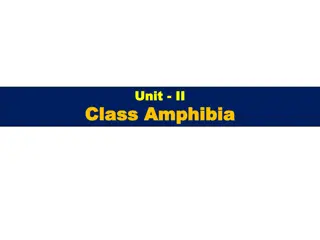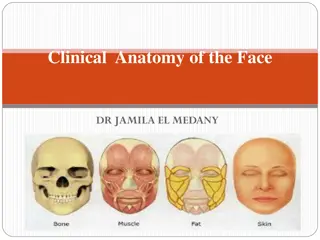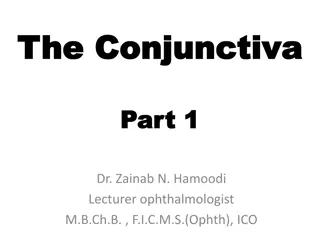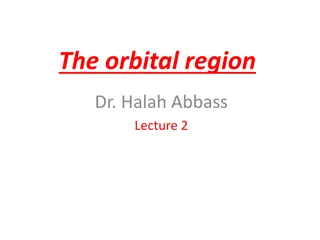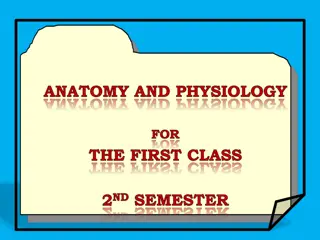Identifying Abusive Bruises in Children: The TEN-4-FACESp Clinical Decision Rule
Evidence-based screening tool TEN-4-FACESp helps healthcare professionals identify abusive injuries in children by recognizing specific patterns of bruising, especially in sensitive areas like the torso, ears, neck, and eyelids. It highlights the importance of reporting suspicious bruises, provides
3 views • 9 slides
Understanding the Anatomy and Function of the Eye
This comprehensive health assessment explores the intricate structures of the eye including the sclera, cornea, iris, retina, and optic disc. It delves into the visual pathways, accessory structures like eyelids and lacrimal glands, and special considerations like age and ethnicity. The visuals prov
0 views • 39 slides
Anatomy of a Frog: External Features and Body Structure
Frog's external features include a streamlined body for aquatic life, smooth and moist skin, green coloration, and a unique head structure with prominent eyes and nostrils. The body lacks a neck and tail, with the head and trunk being broadly joined. The eyes are protected by eyelids, and a nictitat
0 views • 9 slides
Clinical Anatomy and Muscles of the Face Explained
Detailed information on the clinical anatomy of the face, covering the skin's criteria, skin tension lines, muscles of facial expression, muscles acting on the forehead, muscles of the eyelids, and muscles of the mouth. Understand the structure, function, and importance of each component in facial a
0 views • 34 slides
Understanding the Anatomy and Histology of the Conjunctiva
This educational content explores the intricate details of the conjunctiva, a thin mucous membrane that lines the inner surface of the eyelids and globe. Topics include anatomical divisions, histological features such as epithelium and stroma, and common microbial conjunctival pathologies like bacte
0 views • 51 slides
Understanding Blepharitis: Anatomy, Structure, and Glands of Eyelids
Blepharitis is a common eye condition characterized by inflammation of the eyelids. This article dives into the anatomy of eyelids, including their structure and the various glands present. It explains the position of eyelids, the canthi, and the palpebral aperture. Additionally, it discusses the Me
0 views • 31 slides
Understanding the Orbital Region: An Overview
The orbital region encompasses the orbits, eyelids, ciliary and tarsal glands, and anatomical borders. It consists of bony cavities protecting the eyeballs, eyelids that shield the eyes, and intricate structures like the lacrimal apparatus and muscles. Understanding the components and anatomical rel
0 views • 15 slides
The Importance of Vision and Eye Structures in Human Anatomy
Vision plays a crucial role in human survival, with more than half of the sensory receptors in the body located in the eyes. This article discusses the anatomy of the eye, including the structures involved in vision such as the cornea, pupil, iris, and conjunctiva. It also covers the accessory struc
0 views • 21 slides


